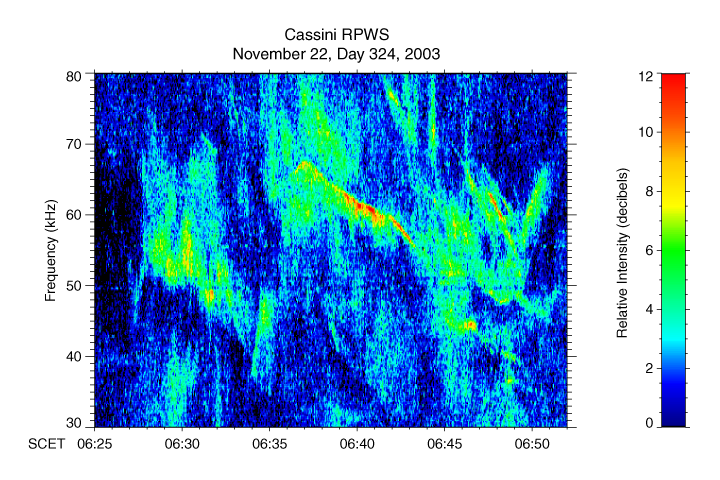
|
|
|
|
|
|
Saturn is a source of intense radio emissions. The radio waves are closely related to the auroras near the poles of the planet. These auroras are similar to Earth's northern and southern lights. The Cassini spacecraft began detecting these radio emissions in April 2002 when Cassini was 2.5 astronomical units from the planet using the Cassini Radio and Plasma Wave Science (RPWS) instrument. The RPWS has now provided the first high resolution observations of these emissions that show an amazing array of variations in frequency and time. The complex radio spectrum with rising and falling tones is very similar to Earth's auroral radio emissions. These structures indicate that there are numerous small radio sources moving along magnetic field lines threading the auroral region. The sound of the radio emissions can be heard by clicking on the "Play Audio" button or by selecting the video version which includes an animated cursor that indicates the time corresponding to the audio track. Time on this recording has been compressed such that 73 seconds corresponds to 27 minutes, or, the recording is at 22x real time. Since the frequencies of these emissions are well above the audio frequency range, we have shifted them downward by a factor of 44. You can also view or download an AVI version of the video. Bill KurthRPWS Deputy Principal Investigator |
 The audio files found at this site are available
The audio files found at this site are available